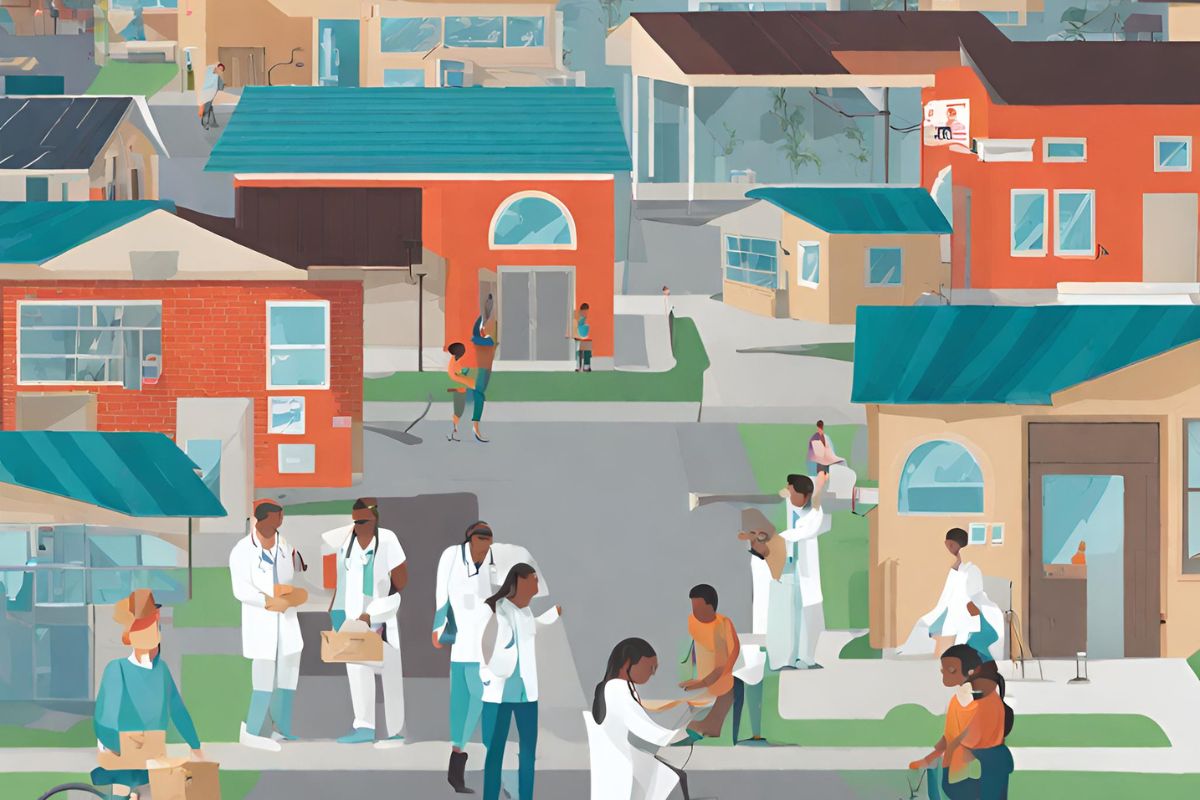Medical centers are crucial in community disasters to ensure residents’ well-being and support the affected population. Disasters, ranging from natural calamities to unforeseen emergencies, demand a coordinated and immediate response from medical centers. These institutions are the backbone of healthcare during and after challenging times. If you want to learn more about how Medical centers respond effectively to community disasters, then this guide is for you.
Preparedness Strategies
Medical centers prioritize preparedness through training and education programs. Staff members undergo specialized training to handle various aspects of disaster response, ensuring they are ready to face unforeseen challenges. Simultaneously, community education initiatives aim to empower the public with knowledge of disaster preparedness, fostering a collective sense of readiness.
Emergency response plans are critical to a medical center’s preparedness strategy. These plans, regularly updated and practiced through drills and simulations, enable medical personnel to act swiftly and efficiently when disaster strikes.
Role of Medical Centers in Disaster Response
In the immediate aftermath of a disaster, medical centers pivot to provide emergency care. Triage protocols are implemented to prioritize and address the most critical cases first. Rapid deployment of medical personnel ensures that assistance reaches those in need promptly. Collaboration with emergency services is very important during challenging times.
Medical centers work closely with first responders and public health agencies, creating a smooth and coordinated approach to disaster response. This collaboration ensures that resources are effectively utilized and the community receives timely and comprehensive support.
Community Outreach and Communication
Effective communication is central to disaster response. Medical centers use public awareness campaigns to inform the community about disaster preparedness measures. Establishing clear communication channels becomes crucial, ensuring accurate information reaches residents promptly. Medical centers recognize the diverse nature of communities and invest in culturally competent communication.
Tailoring information to different populations and overcoming language barriers ensures that everyone receives critical information, fostering a sense of inclusivity during challenging times.
Infrastructure and Resource Management
Medical centers focus on maintaining essential infrastructure and managing resources efficiently. Stockpiling necessary medical resources and ensuring the functionality of life-saving equipment form the foundation of their preparedness.
Surge capacity planning allows medical centers to admit and treat patients flexibly despite overwhelming demand. Temporary facilities and overflow strategies become instrumental during disasters, ensuring that the medical center can adapt to increased patient loads without compromising the quality of care.
Lessons Learned from Past Disasters
Learning from past disasters is crucial for improving disaster response strategies. Medical centers engage in a detailed analysis of case studies to understand the effectiveness of their actions during crises.
This includes evaluating communication strategies, coordination efforts with other emergency entities, surge capacity planning, and the use of technology. By identifying strengths and weaknesses in these areas, medical centers can refine their protocols and enhance their ability to adapt to future challenges. Additionally, assessing the effectiveness of mental health support services contributes to a more compassionate response framework.
Technology Integration
In the digital age, medical centers leverage technology to streamline disaster response. Telemedicine and virtual consultations have emerged as powerful tools, enhancing access to healthcare services during disasters.
These technologies connect patients with remote medical support, ensuring continuity of care even in challenging circumstances. Health information systems play a pivotal role in managing patient data efficiently. By improving communication among medical personnel and ensuring the secure exchange of information, these systems contribute to a more cohesive and effective response.
Mental Health Support
In the aftermath of disasters, medical centers address the emotional impact through vital mental health support.
Psychological First Aid
Psychological first aid (PFA) is fundamental. It provides immediate assistance, stabilizing individuals emotionally and aiding coping with stress, fear, and grief. Trained professionals administer PFA, ensuring ongoing support for individuals during recovery.
Collaborations with Mental Health Professionals
Effective mental health support involves collaborating with psychologists, psychiatrists, and counselors. Partnerships ensure a comprehensive approach to diverse mental health needs. Collaborations extend to community-wide initiatives, including outreach programs and support groups led by mental health professionals.
Resilience within the Community
Efforts focus on building coping mechanisms within the community, offering educational campaigns on stress management, self-care, and recognizing signs of mental health distress. Medical centers also train healthcare professionals to manage their emotional responses, ensuring sustained effectiveness and preventing burnout.
Rural Challenges and Solutions
Rural medical centers encounter specific challenges during disasters, such as limited resources, personnel shortages, and geographic barriers. To address resource limitations, establishing collaborative networks with nearby healthcare facilities and offering specialized disaster response training can enhance preparedness.
Geographic challenges can be mitigated by investing in telemedicine, mobile medical units, and technology for efficient resource transportation. Tailoring disaster response strategies to the unique characteristics of rural communities involves community engagement, including partnerships with local organizations for information dissemination and coordinated efforts.
Continuous Improvement and Adaptation
Post-disaster evaluations are important in assessing the effectiveness of response strategies. Identifying areas for improvement and incorporating lessons learned into updated emergency response plans ensures that medical centers remain agile and responsive to evolving threats.
For residents in need of healthcare services, the medical centre Croydon and Cranbourne provide essential and accessible medical care in the local community.











